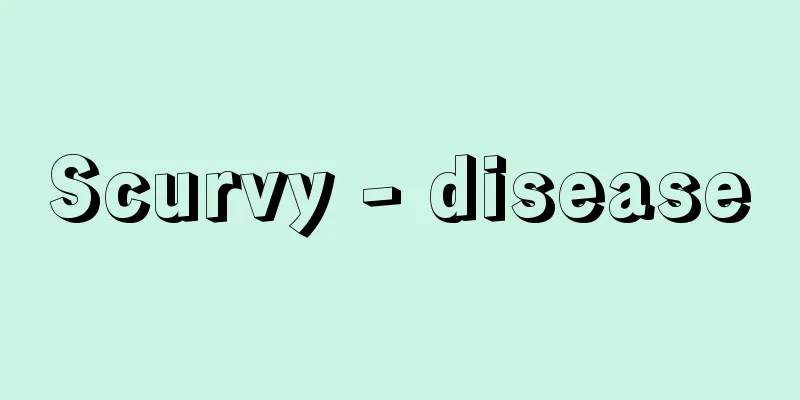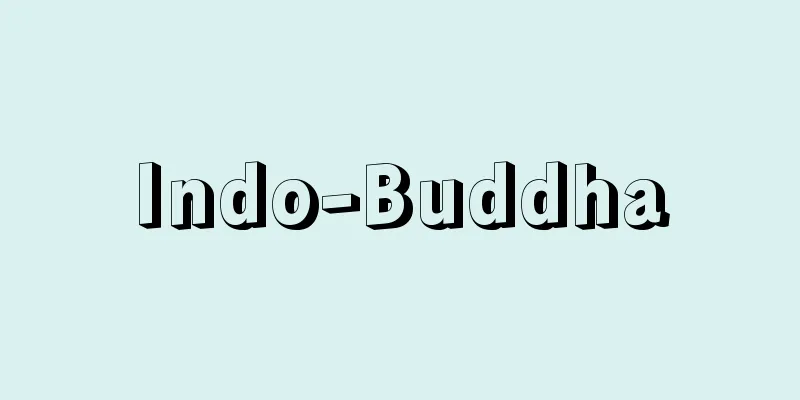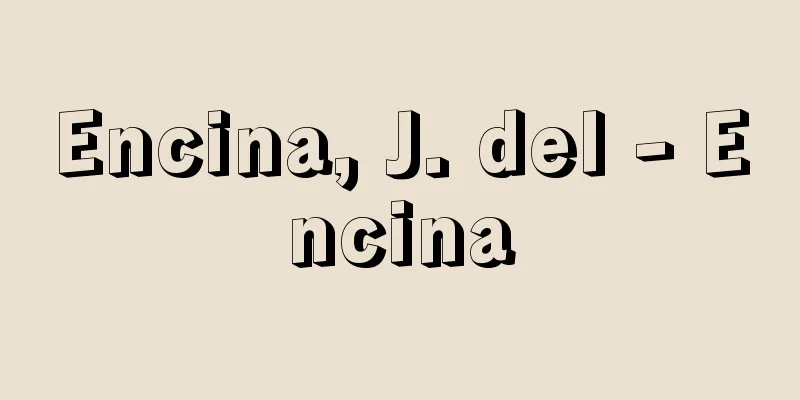Scurvy - disease

|
This disease is caused by a deficiency of vitamin C (ascorbic acid), and is triggered by inadequate intake of vitamin C, impaired absorption from the intestinal tract, and increased internal demand due to bacterial infection. Symptoms are characterized by bleeding and bone changes. In other words, bleeding around the hair follicle occurs due to proliferation and swelling of the keratinous part of the hair follicle, bleeding and swelling of the interdental papilla, and bleeding is likely to occur in other areas where external force is applied. In addition, teeth and bones do not develop well, and fractures are likely to occur. Infant scurvy, which is mainly seen in artificially fed infants after 6 months of age, is also called Möller-Barlow disease after the names of the two doctors who described it. In this case, weight gain stops, new bone formation in the epiphyseal cartilage, which is important for bone growth, is impaired, and subperiosteal bleeding is likely to occur, and it is often noticed by crying when changing diapers. Treatment involves a daily intravenous injection of 100-200 milligrams of vitamin C for infants and 500-1000 milligrams for adults, and once symptoms have improved, patients are switched to taking the recommended daily amount (50 milligrams for adults). Prevention involves consuming green vegetables, citrus fruits, strawberries, and green tea, all of which are rich in vitamin C, but as vitamin C is particularly sensitive to heat, care must be taken not to destroy the vitamin C when cooking. Pregnant and breastfeeding women also have an increased requirement for vitamin C, so pregnant women should take 60 milligrams and breastfeeding women 85 milligrams per day. Scurvy has been known for a long time, and was feared during the Crusades and the Age of Discovery, when many patients appeared. In the mid-18th century, it was proven that eating vegetables and fruits was effective in preventing and treating the disease. In the 20th century, when avian rice disease, known as beriberi, was tested on guinea pigs, they developed scurvy, but were cured when given vegetables. This led to the search for effective substances that could help prevent and treat scurvy, and eventually vitamin C was discovered. Many animals have a biosynthetic pathway in their bodies that starts from glucose and produces ascorbic acid, so they are less likely to develop scurvy, but humans, monkeys, and guinea pigs lack part of this pathway, so biosynthesis is not possible, and a deficiency causes scurvy. In addition, the pharmacological effects of ascorbic acid, such as anti-cancer, anti-allergic, and detoxifying properties, have recently been attracting attention. [Naotaka Hashizume] Source: Shogakukan Encyclopedia Nipponica About Encyclopedia Nipponica Information | Legend |
|
ビタミンC(アスコルビン酸)の欠乏による疾患で、ビタミンCの摂取不足、腸管からの吸収障害、細菌感染などによる体内需要量の増大などが誘因となる。症状は出血および骨変化を特徴とする。すなわち、毛嚢(もうのう)周囲に出血がみられる毛嚢角質部の増殖や腫脹(しゅちょう)、歯間乳頭部の出血や腫脹、そのほか、外力の加わるところに出血がおこりやすい。また、歯や骨の発育が悪く、骨折をおこしやすい。生後6か月以後の人工栄養児に主としてみられる乳児壊血病は、記載した2人の医師名をとりメーラー‐バーロウ病Möller-Barlow diseaseともよばれる。この場合、体重の増加が停止し、骨成長に重要な骨端軟骨部における骨質の新生が障害され、骨膜下出血をおこしやすく、おむつを交換するときに泣くことから気づくことが多い。 治療は、乳幼児ではビタミンCを100~200ミリグラム、成人では500~1000ミリグラムを毎日静脈注射し、症状が改善されたら1日の所要量(成人で50ミリグラム)を摂取するように切り替える。予防には、ビタミンCに富む緑野菜、柑橘(かんきつ)類、イチゴ、緑茶を摂取するが、とくにビタミンCは熱に弱いので、調理の際にビタミンCを破壊しないように注意する。また、妊婦や授乳期間中の婦人はビタミンCの所要量が亢進(こうしん)するので、妊婦は1日60ミリグラム、授乳婦は85ミリグラムは摂取する必要がある。 なお、壊血病は古くから知られ、十字軍の遠征時や大航海時代には患者が多数発生して恐れられた。18世紀中ごろになって、野菜や果物を食べると予防と治療に効果のあることが立証された。20世紀になって、脚気(かっけ)の実験で知られる鳥類白米病をモルモット(テンジクネズミ)で試みたところ壊血病をおこし、野菜を与えると治癒したことから、壊血病に対する予防と治療に役だつ有効物質の検索が進められるようになり、やがてビタミンCが発見された。多くの動物ではブドウ糖から出発してアスコルビン酸をつくる生合成の経路を体内にもっているので壊血病にはなりにくいが、ヒト、サル、モルモットではこの経路の一部が欠けているために生合成されず、不足すると壊血病をおこす。そのほか、最近アスコルビン酸の抗癌(こうがん)作用、抗アレルギー作用、解毒作用などの薬理作用が注目されている。 [橋詰直孝] 出典 小学館 日本大百科全書(ニッポニカ)日本大百科全書(ニッポニカ)について 情報 | 凡例 |
Recommend
Inaw
〘Noun〙 (inau) ⸨Inao ⸩ One of the tools used by the...
Ubuiwai - Ubuiwai
...A celebration in which a pregnant woman is giv...
Passive object love - ukemikitaishoai
...In other words, it is the desire to feel close...
March - March
Originally, it was music that accompanied marches...
Sepals
The individual pieces that make up the calyx of a ...
Puffinus pacificus
…[Hiroshi Hasegawa]. … *Some of the terms mention...
Inaba Tokikuni - Inaba Tokikuni
…A manor located in Oniyu County, Wakasa Province...
Wisdom - wisdom
714-793 (Wado 7-Enryaku 12) A Hosso sect scholar m...
Japanese Exclusion Act
The US quota law of 1924. In the 1907 Japan-US Gen...
Half-cell
…a device used to electrically connect two half-c...
Kisogawa River Diversion and Cofferdam Construction - Kisogawa River Diversion and Cofferdam Construction
...Former name of province. Bishu. It corresponds...
Machiko Ogimachi
Year of death: March 11, 1724 (April 4, 1724) Year...
Mai no hon - Mai no hon
A book containing the lyrics of Kōwaka dance. Str...
Wicksellian cumulative process
…He also made important contributions to financia...
Caspian Turtle - Caspian Turtle
...The carapace is about 15-18cm long, and the ca...









